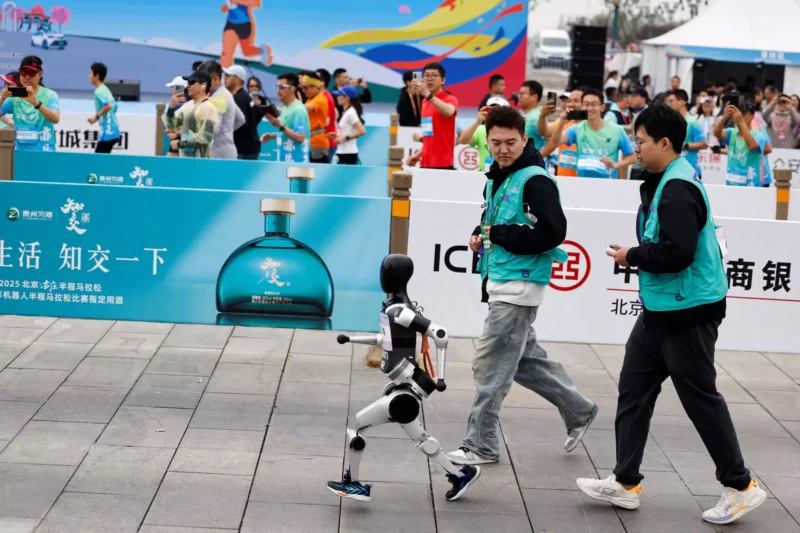Humanoid robots and humans ran together for the first time worldwide this Saturday. In a half marathon held in Beijing, China. Robot number 60901, nicknamed Tiangong.
Crossed the finish line with a time of two hours, 40 minutes, and 42 seconds. After completing the 21-kilometer course and securing first place in this year’s Yizhuang 2025.
Twenty teams from cities including Beijing, Shanghai, Jiangsu, and Guangdong participated. Including models such as Tiangong Ultra, Unitree G1, Leju “Kuafu,” Songyan Power N2, and “Xiaojuren,” among 18 other types of robots.
The race adopted a shared track format for humans and robots. Although each group competed in separate sections. First to start was the 1.8-meter-tall robot “Tiangong,” with long, robust legs that highlight its mechanical design.
In the previous edition of the Yizhuang Marathon, this robot had acted as a “pacemaker.” With a speed of six kilometers per hour. Now its performance has improved to 12 km/h, and during the qualifying rounds. It completed one kilometer in seven minutes, which consumed 16 percent of its battery.
According to experts, running represents a significant challenge for robots due to the repetitive loads and continuous impact on their joints. To overcome these challenges, teams made adjustments such as lighter designs. Advanced air cooling and heat dissipation systems, and some robots even wore athletic shoes designed to improve their stability.
The teams also employed remote operators or semi-autonomous navigation to ensure stable performance during the competition. Jia Ning, guide for the Tiangong team. Explained that maintained a distance of three to five meters from the robot during the race to adjust its pace.
In addition, escorts played a crucial role, intervening quickly if the robot showed signs of instability or risk of falling. Among the notable competitors was the N2 robot from Songyan Power. Representing the Xiaowantong and Xuanfeng Xiazi teams. This robot stands 120 centimeters tall, weighs 30 kilograms (kg), and reaches a theoretical maximum speed of 3.5 m/s.
The “Xiaojuren” robot from the Xiaojuren team. Which stands 75 centimeters tall and weighs 10 kg, reached a maximum speed of 0.7 m/s. To complete the 21 kilometers, most of the robots had to change their batteries several times during the race.
Each group had a technical support team similar to those used for tire changes in Formula 1 races. According to the rules optimized by the organizing committee. The time spent changing batteries was included in the total race time.
With information from Prensa Latina
Translated by Aliani Rojas Fernández
- Campaign Against Arboviruses Intensifies in Moa - 13 de December de 2025
- The 11th Plenum of the Central Committee of the PCC Convenes - 13 de December de 2025
- ANPP readjusts its session period amid complex national scenario - 13 de December de 2025

